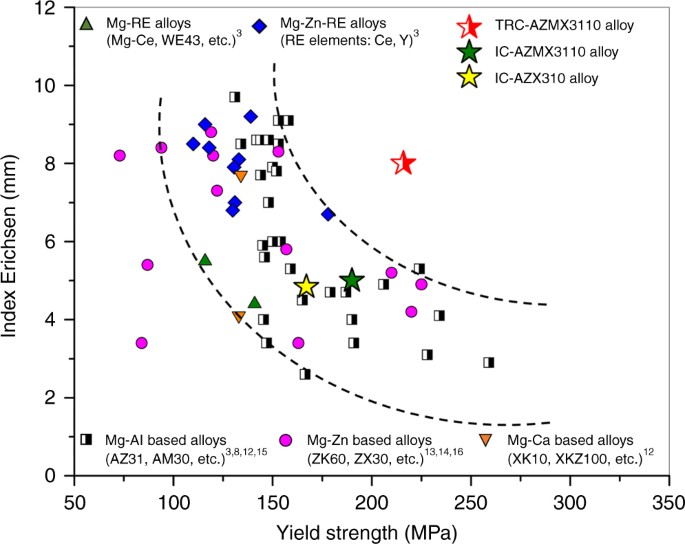Although magnesium alloys, as the lightest structural alloys, offer significant potential for automotive applications, their applications remain limited due to their poor formability at room temperature. Since the strategies used for improving formability usually result in a degradation of strength, there are no high strength magnesium alloys showing good formability. Here we report an alloy design concept that can simultaneously provide high strength and good formability. Such designed alloy when subjected to an appropriate processing technique shows a combination of strength and formability that surpasses those of the existing magnesium alloys reported so far. The alloy design concept used in the present study is based on the utilization of alloying elements that can induce precipitation, as well as maximize the segregation of other texture-controlling alloying elements. Such developed alloy is expected to broaden the application of Mg alloy sheets, which are now starting to gain acceptance by automotive industries.
Magnesium
alloys, as the lightest structural alloys having a density about
one-fourth that of steels, offer significant potential for improving
energy efficiency of various transportation systems such as automobiles1,2.
Numerous R&D efforts in the last decade have led to the development
of various types of magnesium alloys having good combination of
strength and ductility3,4 and excellent corrosion resistance5.
Although there are many variants of magnesium alloys showing large
ductility, however, they usually show poor formability at room
temperature3,
hindering their widespread applications in automobiles. Poor
formability of magnesium alloys arises from several factors; development
of strong basal texture during rolling (thermomechanical treatment) and
limited number of available deformation modes due to magnesium having
hexagonal close-packed (hcp) structure6.
Although Mg alloys are readily formable at warm or high temperatures
despite their poor formability at room temperature, forming at warm or
high temperatures is quite energy intensive and inefficient. Therefore,
to make Mg alloys attractive for applications in automobiles, their
formability at room temperature should be improved. There have been
numerous attempts to improve formability of magnesium alloys and it has
been shown that the formability of Mg alloys can be improved by texture
randomization/weakening from the typical strong basal texture of
conventional Mg alloys, which is usually achieved by the modification of
thermomechanical processing7,8 and the addition of rare earth elements (REEs)9,10,11.
The randomized/weakened basal texture of REE-containing alloys is
certainly beneficial for formability, but also results in low strength.
Such inverse relationship between formability and strength is also
applicable to other non-REE containing Mg alloys3. Figure 1
shows the Index Erichsen (IE) value (which is an indication of stretch
formability; see Methods) as a function of yield strength of various Mg
alloys3,8,12,13,14,15,16. As shown in Fig. 1,
yield strength of Mg alloys having the IE values larger than 8 mm is
lower than ~160 MPa. However, as yield strength of Mg alloys increases
to 200 MPa, their IE values become lower than 6 mm, making them
non-formable at room temperature. It is apparent that the conventional
approaches that improve formability have adverse effects on strength or
vice versa. Therefore, new alloy design and processing concepts should
be utilized to develop high strength Mg alloys with good formability at
room temperature.
Fig. 1
In
this study, we report an alloy design concept that can simultaneously
provide high strength and good formability at room temperature. The
newly developed Mg-3Al-1Zn-1Mn-0.5Ca (wt.%) (AZMX3110) alloy using the
alloy design concept shows a much improved combination of formability
(IE value) and yield strength, namely IE value of 8 mm with yield
strength of 219 MPa, as compared to commercial as well as experimental
Mg alloys, as presented in Fig. 1.
Such improvement in the combination of formability and strength has
been realized by a judicious control of alloy chemistry and a selection
of appropriate process for such alloy chemistry. The composition of
AZMX3110 alloy is quite similar to that of the most familiar and
commonly used Mg-3Al-1Zn (AZ31) alloy. It is expected that such
composition of the developed alloy would lead to an early acceptance by
the users due to its similarity to AZ31 alloy.
Click Here to read full article


0 Comments